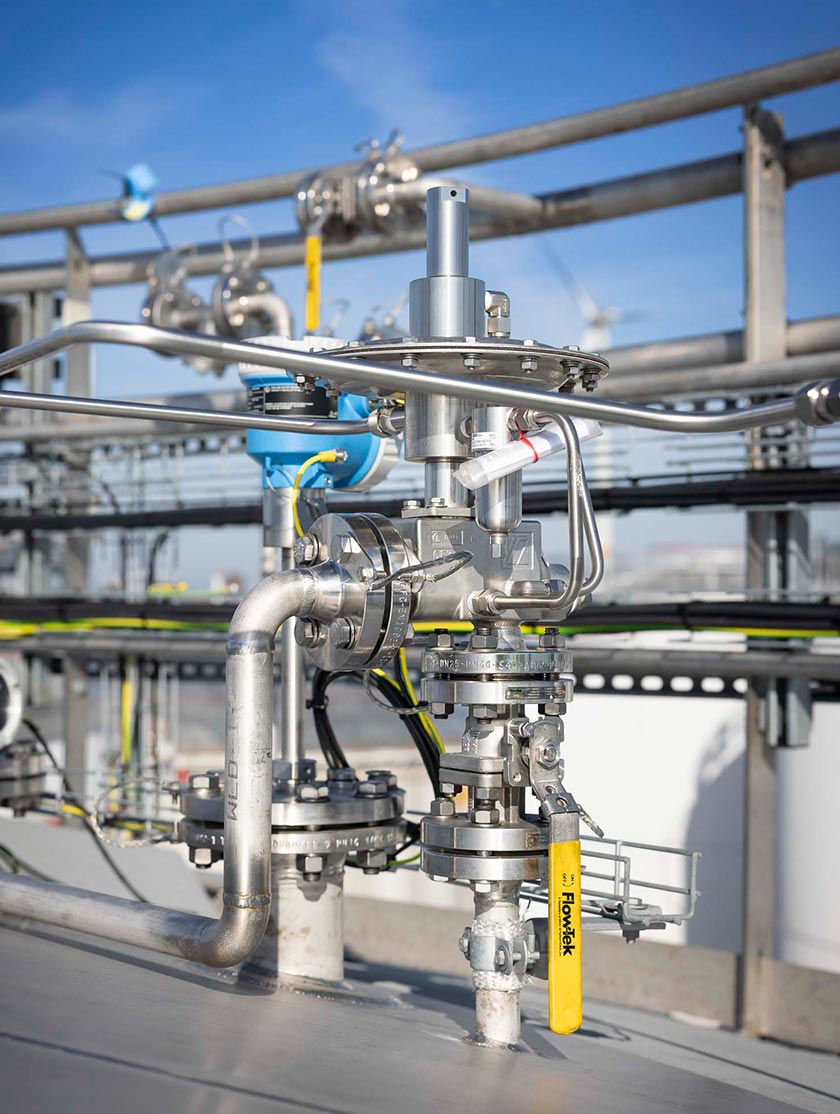How Flame Arrestors Prevent Explosions in Hazardous Industries
Flame arrestors (also known as flame arresters) are an essential safety measure in industries such as oil and gas, chemical manufacturing and mining, where flammable gases and vapours pose a significant explosion hazard. These devices play a vital role in preventing the spread of flames and explosions by interrupting the flame front and reducing the explosion pressure to a safe level. To understand the scientific basis for the effectiveness of flame arrestors, it is important to first understand what flame arrestors are and how they work.
What Are Flame Arrestors?
Flame arrestors are passive, mechanical safety devices installed on storage tanks, pipelines and other process equipment to control the spread of fires and explosions. They consist of a cylindrical casing with a series of corrugated metal plates or wires that act as barriers to the flame front. The size and spacing of these plates are carefully designed to allow gases and vapours to flow freely and to prevent flames from spreading.
When a flammable mixture passes through the flame arrestor, any ignition is contained within the casing and prevented from reaching the flammable atmosphere on the other side.
How Flame Arrestors Work During Detonation
In the event of a detonation, the flame front is interrupted by the corrugated metal plates of the detonation arrestor. This creates shock waves that quickly reduce the pressure to a safe level. This process is called deflagration and is the mechanism that determines the effectiveness of detonation arrestors.
Factors Affecting the Effectiveness of Detonation Arrestors
- The size and spacing of the corrugated metal plates
- The use of heat-resistant materials
- The position of the detonation arrestor in the system
The correct size and spacing of the detonation arrestor plates ensure that the flame is interrupted and contained without creating too much pressure. Heat-resistant materials such as stainless steel are essential to withstand the high temperatures that occur during a detonation. Finally, the position of the detonation arrestor must be carefully chosen to ensure maximum protection. Placing the detonation arrestor too close to or too far from the potential ignition source can adversely affect its effectiveness.
Conclusion
In short, the effectiveness of detonation arrestors depends on a combination of design, materials, and placement. By interrupting the flame front and reducing pressure to a safe level, these devices play a critical role in preventing catastrophic explosions in hazardous environments. Properly designed, installed, and maintained flame arrestors are an essential safety measure for any industrial facility.
Looking for The Right Flame Arrestor? Get Expert Help Choosing the Ideal Arrestor Engineered To Fit Your Needs |
Cashco’s flame arrestors are engineered to stop the propagation of flames in gas piping systems, helping protect equipment, personnel, and facilities. For more information about Cashco's arrestors, view all models here .
Cashco is dedicated to ensuring you select the best solution for your tank protection needs. Need help choosing the right flame arrestor? Contact us and our experienced team will gladly assist you in finding the ideal product!
Why Flame Arrestors Matter |
Cashco Flame Arrestors are specifically engineered to match the explosive mixtures Maximum Experimental Safe Gap, in order to ensure complete extinction of the flame.



